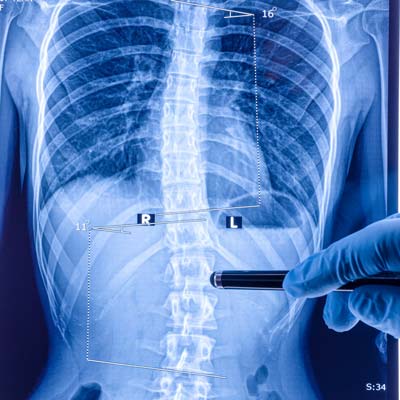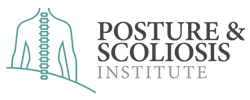Blogs
The Importance of Spinal Curves

A common misconception among chiropractic patients is that a perfectly straight spine indicates good health. Any chiropractor knows that this statement is false. The fact is that a healthy curvature of the spine, in particular an “S” curve from top to bottom, is ideal. This curve enables our spine to work effectively as the core of our balance and stability.
The overall S shape is made up of three distinct curves:
- Cervical lordosis:
- Thoracic kyphosis
- Lumbar lordosis.
Lordosis represents an inward curve, while kyphosis represents an outward curve. From top to bottom, an ideal spine has an outward-inward-outward curve, thus taking the shape of an S.
Why curvature is important
The spine’s curves are important for flexibility and support. The opposing curves of the sections work together to form a spring-like structure, which gives the spine additional shock-absorbing power. The spine experiences constant wear and tear from vibration and shock, which can cause fractures if not properly protected.
Curvature helps evenly distribute weight and cushions against the downward force of gravity. The spine’s curves distribute weight evenly throughout the whole region, allowing various muscle groups to bear the burden of balance and stability. This is especially true when you’re in the middle of a strenuous activity. Lifting, bending, turning, and other activities put strain on your back when it is not properly aligned. The spine must move in tandem with the rest of your body while also supporting your own weight and the energy generated by your behavior.
Finally, curves in the spine relieve pressure between individual vertebral discs. The majority of the above vertebra’s mass is not concentrated on the one below it because discs are not stacked one on top of the other. The vertebra below doesn’t have to bear the entire weight by itself– other discs help distribute the load so that any one disc isn’t overused.
The curvature must be developed and maintained.
The spine of an adult, on the other hand, is a S curve that was formed during growth. The curve of a newborn baby’s spine is actually shaped like a C, with pronounced kyphosis until they begin to crawl. The cervical lordosis portion of the ideal S curve forms as children raise their heads. The spine’s final function of support comes during maturation when youngsters learn to walk upright.
Unfortunately, spinal curvature develops during childhood, thus there’s a restricted amount of time for natural curving to take place. Any issues that occur during this time may impede the formation of an ideal spine curve, resulting in general kyphosis, lordosis, or scoliosis. Correcting this requires a long-term chiropractic intervention.
For adults with a typical S-shaped spine, it is essential to take preventive measures. When subluxations or translations occur, it deviates from the ideal soon afterwards. The purpose of chiropractic adjustments is to ensure the spine is reset and properly supported. Maintaining natural growth is vital since it can no longer take place.
Chiropractic BioPhysics (CBP) uses the ideal spine model to map deviation from the natural S curve. Using precision tools and data points, adjustments can be made to create a shift back to ideal. Adjustments are tailored to the person and apply specifically to their unique spine, making it possible to maintain a spine to precise curvature degrees and alignment vectors.
CBP has the highest success rates for reducing or eliminating chronic pain, as well as remolding the spine into its proper posture through correcting the spinal curvatures.

Posture & Scoliosis Institute
313 Interstate Blvd
Sarasota, FL 34240
| Monday | 8 AM - 5 PM |
| Tuesday | 8 AM - 5 PM |
| Wednesday | 8 AM - 5 PM |
| Thursday | 8 AM - 5 PM |
| Friday | Closed |
| Saturday | Closed |
| Sunday | Closed |
